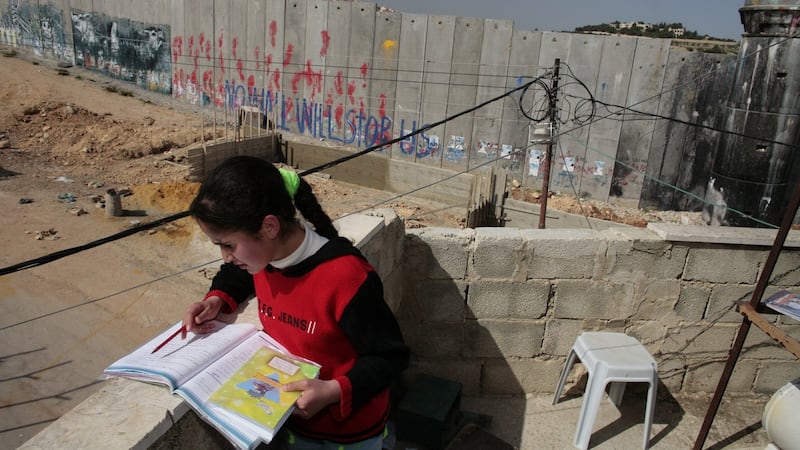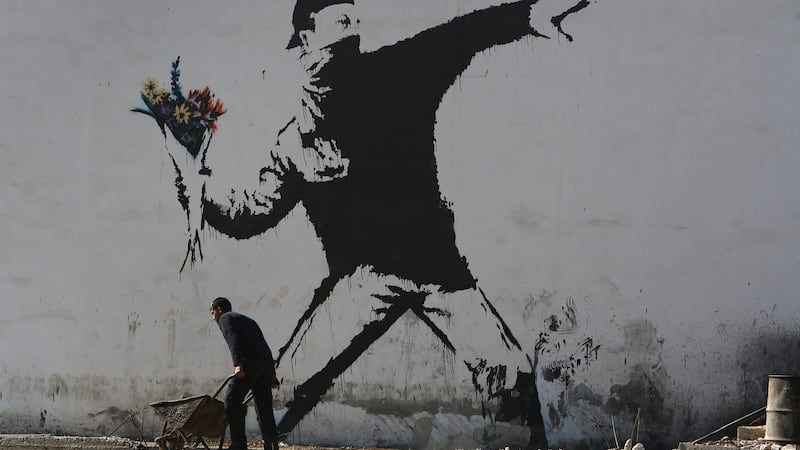Living in Bethlehem, you can never escape thoughts of Christmas. The small town has family-owned gift shops that date back to the 15th century, their windows filled with carved wood nativity scenes even at the height of summer.
Bethlehem is my wife’s hometown and on the most balmy days of the year, the trees in the family orchard are bursting with what I can only think of as Christmas pudding ingredients: grapes, apricots, almonds, oranges, lemons, and figs. Bethlehem sits at the edge of the desert that holds the Dead Sea, yet it is amazingly fertile. The only Christmas pudding ingredients that don’t grow among its hills are the spices, though they are sold in the souk, displayed in brightly coloured mounds.
When I started writing my biography of Bethlehem, I wasn’t sure how or when to begin. Then I had what I choose to interpret as a brainwave, and the Christmas pudding became my leitmotif. All the sights and smells of Bethlehem’s past lives are still very much alive in the present-day town, creating a rich, dense – occasionally stodgy – mix. It is history made pudding.
True, no one in Bethlehem ever thought of boiling nuts and fruit together to make an edible cannonball – that takes British genius – but the spicy raisin-y taste we associate with Christmas comes from the Bethlehem region, and this is as true of Christmas pudding and mince pies as it is of German stollen, or the Provençal 13 desserts.
In part, this is a legacy of the Crusades, but also of much older trade ties. Irishmen like St Cathal were making the long journey to Bethlehem from Waterford in the 7th century, following existing trading routes. The Magi of Matthew's Gospel are merchants from a proto-Arab tribe known as the Nabataeans, who controlled the trade in spices, incense and gold from Yemen, India and Ethiopia for a thousand years until about the 4th Century CE.

Besides the fruits and spices, a secret ingredient of Christmas pudding is suet, or lamb fat. Puddings are airy and moist because the chunks of suet melt at a higher temperature than egg batter, leaving air pockets in the dough and simultaneously bathing the dough in moist fat. Another proto-Arab tribe, the Idumaeans, were the great shepherds of the region: nomadic graziers who prospered to become a powerful force around the city of Hebron, 14 miles south of Bethlehem.
When my nephews dress in bathrobes and tea towels as shepherds in the school play, they are depicting the poor relations of the Idumaeans. King Herod, the great tyrant of the Bible, was descended from both the Idumaeans, through his father, and the Nabataeans by his mother.
It is a mistake to think of the Jews on one side and Arabs on the other. Herod’s family was entirely Jewish. At the time Jewishness was a religion, not an ethnicity. However, so the nativity gospels tell us, even Herod’s closest relatives did not think he had the qualities to be a king, compared to the infant in the manger.
The allusion to these two proto-Arab tribes in the Gospels is figurative and, even, political. But it also reflects the reality of the town at the turn of the 1st century. The gospels place Nabataean merchants and nomadic shepherds at the nativity, because Bethlehem was a town that lived off visitors and foreign trade. It is a port city, though a desert port rather than a seaport.
The name Bethlehem has been interpreted to mean “House of Bread” in the ancient Canaanite language that is the precursor of Hebrew, and “House of Meat” in Arabic. The earliest written appearances of the name Bethlehem are in Greek, and so we do not know whether bread or meat came first. However, places are often named by the people who visited them.
The shepherds of Luke’s Gospel would have worn kohl around their eyes, tattoos on their faces and eaten meat mixed with cheese in their favourite dish, which kosher food laws forbid. They were scary figures. Yet they also brought wealth into Bethlehem. The square in front of the Church of the Nativity was a livestock market until well into the 1920s when the British forced it to move.

Bethlehem grew up as a meeting place of trade and culture, and became a Christian pilgrimage site. The town still depends upon foreign visitors. When I first visited in 1993, Manger Square was a parking lot, filled with tour buses which left oily rainbows on the uneven asphalt. The square was dug up, inspected by archaeologists and relaid using the local marble in 1999. Last year, the roof of the church was repaired for the first time since the 15th century.
These improvements were made possible because of the limited self-government the town enjoys as a Palestinian city. But it is still under occupation, and it is more closed off from the world than it has ever been.
Visitors file through a giant steel-sided structure that functions as a checkpoint, leading to a gate in the wall that surrounds the town. They will see the artist Banksy’s Walled-Off Hotel on the right as they enter the city. The wall is there to separate the town from the hills and orchards which hold 40 newly-built, Jewish-only settlements. The wall and the settlements form a concrete ring which stops the city expanding, while simultaneously driving local farmers off their land and into Bethlehem.
The little town has become more fractious and overheated as the population and the pressure builds.

Bethlehem was a city that flourished because it was open to the world, even when the visitors seemed strange or alien. The 40 settlements are choking the city and damaging the very thing that makes Bethlehem special. The settlers are taught that they are preserving the Jewish character of the land when in fact ancient Bethlehem was a crossroads of people and faiths. It was a bit of a Christmas pudding, even before the birth of Christ, and all the better for it.
Bethlehem, a Biography of a Town by Nicholas Blincoe is published in hardback by Constable, £20

















